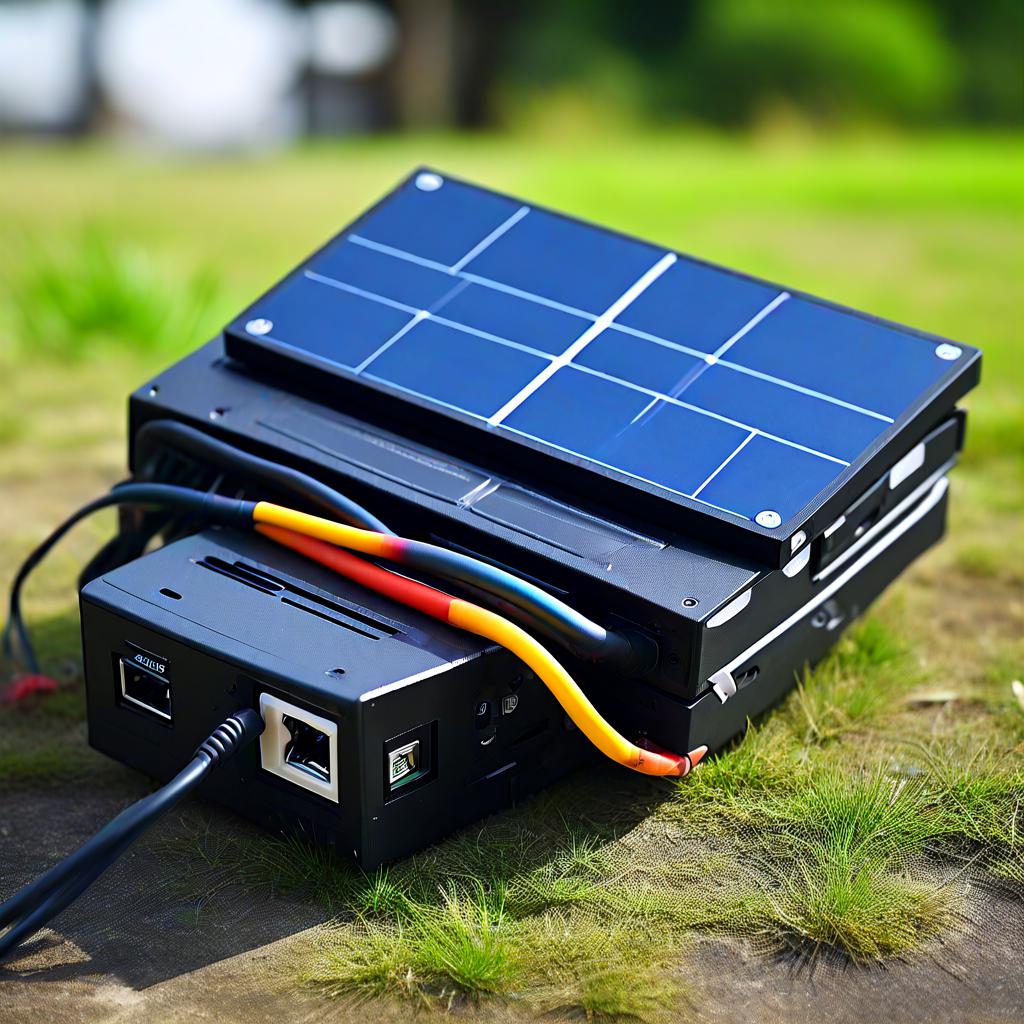Product Features

Network adaptability
Supports 4G full network connection, automatically switches network frequency bands to ensure signal stability, with a delay of less than 100ms. Built in heartbeat packet mechanism, keeping the device permanently online and automatically reconnecting after network disconnection. Support automatic dialing after power failure recovery.

Interface Scalability
Provide RS232/RS485 interface and support cascading of multiple devices. Reserve I/O and ADC interfaces to meet customized data acquisition requirements. Supports protocols such as TCP/UDP/HTTP/MQTT and is compatible with mainstream cloud platforms.

Industrial grade design
Wide temperature range (-25 ℃~75 ℃), IP30 protection level, suitable for harsh industrial environments.

Flexible deployment
No wiring required, reducing construction and maintenance costs, especially suitable for mobile or temporary scenarios.

Ultra Low Power Consumption Design, Supporting Multiple Power Supply Modes
Innovative 4G online low-power technology, low power consumption in idle online state 5mA@12VDC Supports power supply modes such as mains electricity, solar energy, and batteries.
Core Functions
| Function Block | Function Description |
| Network/Protocol | Support VPDN, APN private network access, and SSl/TLS encryption Supports 4G multi DNN slicing, 4G LAN, 4G Redcap, low power consumption, high-precision B-code timing (optional). Compatible with over 300 mainstream industrial protocols including Modbus TCP, Modbus RTU, S7, Profinet, CAN, COAP,/MQTT, TCP, UDP, OPC UA, etc. Support TCP/UDP transparent transmission mode, HTTPD mode, SMS transparent transmission mode, MQTT mode, MODBUS polling collection mode. Supports dual MQTT, TCP Server functionality, can support up to 5 TCP connections simultaneously, supports dual data center backup transmission and multi data center synchronous transmission (5 data centers). Support edge computing, and report data in JSON format under the MQTT channel. |
| Intelligent management | Data and SMS communication are mutually backed up, and in the event of wireless network signal or central network failure, they can automatically switch to SMS mode for data transmission and reception; SMS supports 7 bit, 8 bit, UCS2 encoding, and can send and receive Chinese SMS with domestic and international area codes. Support custom heartbeat package/SN heartbeat package/ICCID heartbeat package/IMEI heartbeat package. Support custom registration packages/SN registration packages/ICCID registration packages/IMEI registration packages. Support for socket distribution. Support link detection mechanisms such as PPP layer heartbeat, ICMP detection, interface traffic detection, TCP heartbeat packet detection, etc. Support automatic dialing when powered on, on-demand dialing, and scheduled online and offline connections. |
| Operation and maintenance management | Support local or remote viewing of network and device status, parameter configuration, device restart, data debugging and diagnosis, firmware/patch upgrades, and other operations and maintenance work. Support local and remote WEB CLI、 Multiple parameter management methods for the platform. Support parameter backup and import, support using private keys to import and export parameter configurations. Support mobile scanning to configure parameters. |
| Time synchronization function | Support NTP network time synchronization function. Built in RTC. |
Specification Parameters
| Category | Project | Specification Parameters |
| Cellular Network standard | Network standard | FDD-LTE: B1/3/5/8 B7/B28 (optional) TDD-LTE B34/38/39/40/41 |
| network access | Support APN/VPDN | |
| GNSS specifications (optional) | locate mode | Beidou&GPS dual star positioning, WIFI+GPS+base station assisted positioning |
| positioning accuracy | GPS positioning error<10m (this data is for reference only, and the positioning error is related to factors such as terrain and time in the area where the terminal is located); The positioning error of the base station is based on the density of the base stations in the interval it is located in; WIFI positioning<30m | |
| sensitivity | Tracking sensitivity: ≤- 162dBm, capture sensitivity: ≤- 148dBm | |
| positioning time | Cold start ≤ 33S, hot start ≤ 5S | |
DTU | DTU mode | TCPS/TCPC/UDP/Modbus RTU to Modbus TCP/MQTT |
| Heartbeat packet/registration packet | support | |
| Baud rate | 1200/2400/4800/9600/19200/38400/57600/115200/230400 | |
| Data bits | 5. 6, 7, 8 (default) | |
| stop bit | 1、1.5、2 | |
| check bit | No parity (default), even parity, odd parity, SPACE (optional), and MARK parity (optional) | |
| Serial port type | 1×RS232/RS485 | |
| Reliability | operation temperature | -25℃~ +75℃ |
| storage temperature | -40℃~+85℃ | |
| Working humidity | 5%~95%RH(No condensation) | |
| Storage humidity | 5%~95%RH(No condensation) | |
| protection grade | IP30 | |
| EMC level | 4 | |
| Mean Time Between Failures (MTBF) | >100000h | |
| Basic Specifications | power supply | Power supply range: DC 5-36V Adapter: DC 12V/0.5A |
| standby power | average 12V@5mA | |
| size | 92 × 60 × 23.5mm (L * W * H, excluding guide rail components and antenna base, may vary depending on different configurations) | |
| Installation method | Rail type installation, hanging ear type installation, embedded installation, horizontal desktop placement | |
| casing | Metal case | |
| weight | About 200 grams | |
| Hardware Interface | SIM card interface | 1 x Nano SIM card slot (optional 2 x Nano SIM card slots), built-in ESIM (optional) |
| pilot lamp | PWR、WORK、NET | |
| power interface | DC power supply: cylindrical 5.5 × 2.1mm round socket or industrial terminal power supply, with reverse polarity protection | |
| Terminal interface | V+ V-: Power supply terminal, can be used with either power interface. GND : Grounding terminal. TX RX: RS232 interface A B: RS485 interface CAN interface (optional) GPIO interface (optional) PWM pulse output (optional) Time pulse counting interrupt (optional) ADC interface (optional) |
1. Automatic upgrade: If the battery level is greater than 30%, do not touch the screen when restarting. There will be two words "upgrade" next to the signal in the upper left corner, and then wait for about five minutes for automatic upgrade. 2. Manual upgrade: If the battery level is greater than 30%, click on remote upgrade in the settings, do not touch the screen, and it will automatically upgrade. Do not click upgrade within 5 minutes of booting up, as the backend will automatically query the version at this time.
If the device is not online, you can check it one by one as follows. 1. Try restarting the device first. If it still doesn't work after restarting, follow the steps below to troubleshoot. 2. Is the IMEI entered into the platform consistent with the actual IMEI of the device. (It is recommended to check the device IMEI in the device menu) 3. Check if the SIM card inserted into the device is in arrears, if it is shut down, and if a second real name authentication is required. 4. Whether the device displays a 4G signal and the data icon is normal (the icon with a diagonal bar represents abnormality) without any outstanding fees or shutdown 5. If the signal is not displayed, unplug and reinsert the SIM card, restart the device and check again. If the 4G signal still doesn't work despite normal display, find another SIM card, insert the device and restart to see if it works properly. If it works, it's a problem with the SIM card.
During the device entering power-saving mode, it cannot automatically update its positioning, and functional instructions cannot be executed in a timely manner. It needs to be set to normal mode before it can work normally according to instructions. Please make backups yourself!
If the device is located indoors or in an underground parking lot, it may result in the inability to search for GPS satellite signals, which are either WIFI signals or base station signals, leading to significant errors, which is a normal phenomenon. After the device moves outdoors or leaves an area with poor signal, it will automatically calibrate its position. As long as it is outdoors or in an open area, the error will not be significant.
The front of the device faces outward because there is a ceramic antenna on the front that receives signals. If the front is obstructed by metal, it will affect the normal use of the device.